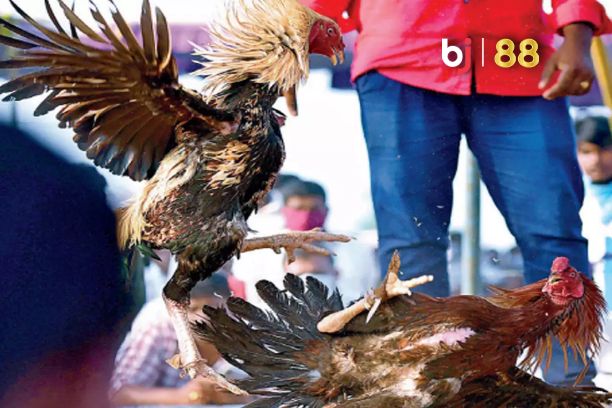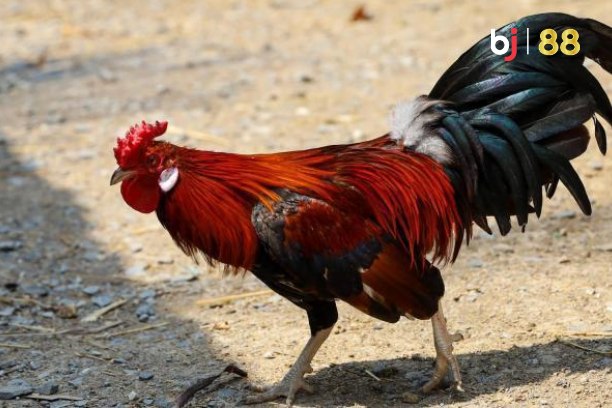Knowing how to inject fighting chickens correctly is essential for practical breeding. This helps prevent and effectively treat chicken diseases through drugs or vaccines. However, only some have the knowledge and skills about the injection procedure. So, how do you properly inject chickens? Please refer to the article below by BJ88 for detailed information!
Why inject cockfighters?
To raise chickens effectively, the vaccination process plays a vital role in preventing and treating pathologies. Vaccines, which induce active specific immunity, help the body fight particular pathogens. Vaccinating livestock, in this case, chickens is considered an essential method of ensuring the health and development of the herd.
It should be noted the following when injecting cock fighting:
- Type of vaccine:
- Live vaccines (asthenic vaccines): Reduce microbial virulence and cause early immunity. However, it may cause reactions and require special storage conditions.
- Dead vaccines (inactivated vaccines): Safe, stable, and easy to use, but efficacy is often poor and requires repeated injections.
- Post-injection reactions:
- Local reactions: Swelling, heat, pain at the injection site. It can be treated by applying hot water.
- Infection: Antibiotic treatment is required if the injection site becomes infected.
- Allergic reactions: Fever, trembling, vomiting. Use antiallergic medications if necessary.
- Chicken dosage and condition:
- Pay attention to the injection dosage and the condition of the chickens to avoid severe reactions.
- Monitoring and Reactive Processing:
- Monitor the condition of chickens after vaccination.
- Treat the mild reaction by applying hot water.
- In case of severe reactions, use antiallergic drugs.
Items to prepare when injecting cock fights
Prepare items before injecting chickens or vaccines. The millet must prepare the following items to make the injection process smooth.
Cylinder:
- It is recommended to use an iron cylinder with a dosing screw with a capacity of 10ml, accompanied by a metal pint.
- The master trusts some common types of cylinders:
- Thamavet cylinder (Israel): Composed of two parts of high-heat-resistant glass and piling pipes, fiberglass plastic handle, high-quality impact-resistant glass tube, and precision-machined stainless steel piston.
- Meka 20cc cylinder (Taiwan): Used to inject vaccines, antibiotics, and nutrient solutions. TPX plastic material is highly heat resistant, has adjustable capacity from 0.5 – 20cc, and has a clear split pipe body.
- 5cc bean cylinder (Voxivet): Includes water hose, injection cylinder, spare needle, lubricant, preliminary navel. It has a rubbed design and fits the handle. The needle automatically withdraws and adjusts the amount of medicine.
Box of cock fighting needles:
- Prepare needle boxes for cattle and poultry in sizes 7 and 9.
- Short needles (1cm) are used for subcutaneous injection, and long needles (2cm) are used for intramuscular injection.
- It is recommended to prepare 2-3 needles of each type in case of needle fracture during manipulation.
Disinfection of instruments:
Step 1: Disassemble the parts of the cylinder, needle, and pint, and put in a saucepan to boil for 4-5 minutes. Then, let it cool and remove it. Note that the pot must be very clean and not previously used to heat salt or fat.
Step 2: The iron cylinder assembly ensures airtightness and no leakage of the drug solution. How to check:
- The spiral is located up about 0.5-1cm.
- Tightly seal the end of the needle with your index finger; with the other hand, pull the plunger lever up 2-4cm and release.
- The plunger will automatically push back to its original position if the cylinder is airtight.
- If not airtight, adjust the positioning screw to fix it.
Step 3: Attach the needle correctly and gently push the plunger so that the solution of the drug or vaccine in the cylinder sprays a few drops to eliminate the air inside wholly.
Note:
- The injection of chickens can lead to an abscess if gas is left in the cylinder.
Instructions for injecting cockfighting by subcutaneous method
Subcutaneous injection is an essential technique in chicken breeding, helping to deliver the necessary drugs and vaccines to chicks. This technique is simple, but it needs to be done carefully to ensure the effectiveness and safety of chickens. Here are detailed instructions on how to inject subcutaneously for chickens:
Subjects of application: Chick
Injection site:
- Neck area
- Abdominal area
- Wing area
Advantage:
- Inject large amounts of drugs
- Less hurtful to chickens
Injection steps:
- Pinch the goosebumps from the neck with your thumb and forefinger.
- Poke the needle in the direction from the head down the torso into the pinched skin.
- Slightly push the piston to inject the drug into the chicken’s body. Perform gentle and even manipulations until the medicine is gone.
Vaccines that can be administered subcutaneously:
- Newcastle disease: Injected under the skin of the neck or pectoral muscles when chickens are three days old.
- H5N1 Avian Influenza: Subcutaneously administered at a dose of 0.3ml/bird.
- Gumboro disease: Subcutaneous injection of the neck and sternum. Do not mix with other vaccines.
- Chickpox: Injected subcutaneously when chickens are seven days old.
- Pasteurellosis: Inject a dose of 0.5ml under the skin of the neck or breast when the chicken is two months old.
Note after injection:
- The injected area may be slightly swollen but should normalize after 3-5 minutes.
- Disinfect the needles thoroughly.
- Shake the medicine well before use.
Recommend:
- It is recommended to consult a veterinarian before injecting cockfights.
- Use needles suitable for chicken sizes.
- Inject the correct dosage according to the instructions.



